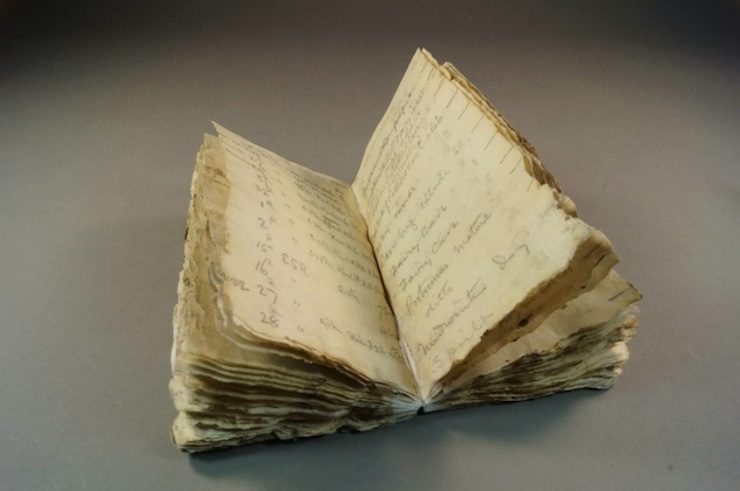SUMMARY
This is AI generated summarization, which may have errors. For context, always refer to the full article.

WELLINGTON, New Zealand – A photographic notebook from Robert Scott’s ill-fated Antarctic expedition has been found after a century trapped in the ice of the frozen continent, New Zealand’s Antarctic Heritage Trust said.
It belonged to scientist George Murray Levick and was discovered outside Scott’s 1911 Terra Nova base during last year’s summer ice melt.
Writing in the notebook remains legible, with Levick’s name in the opening pages, but the binding has been dissolved by years of ice and water damage, the trust’s executive director Nigel Watson said.
“It’s an exciting find. The notebook is a missing part of the official expedition record,” he said.
“After spending 7 years conserving Scott’s last expedition building and collection, we are delighted to still be finding new artifacts.”
Watson said the pages of the notebook were taken to New Zealand and individually restored, then given new binding and returned to Antarctica, where the trust is working to preserve 5 sites used by explorers Scott, Ernest Shackleton and Edmund Hillary.
Scott’s expedition split into two groups after reaching the Antarctic, with the leader’s contingent reaching the South Pole on January 17, 1912, only to find Norwegian Roald Amundsen had beaten them there a month earlier.
Scott and his companions later died of exposure and starvation.
Levick was in the other group, which travelled along the coast to make scientific observations but became stranded from the base camp when pack ice prevented their ship from picking them up.
The 6 men all survived the Antarctic winter by digging a cave in the ice and eating local wildlife, including penguins and seals.
‘Depraved’ penguins
Other discoveries made by the Christchurch-based trust include bottles of whisky taken on Shackleton’s 1907-08 expedition and lost negatives from his 1914-17 foray to the Ross Sea.
A Scottish distillery analyzed the Shackleton whisky, finding it unexpectedly delicate “with a touch of smoke just at the finish”, and painstakingly recreated the tipple for a limited run of 50,000 bottles that sold at more than 100 pounds ($160) a piece.
In contrast, the contents of Levick’s notebook are fairly mundane, comprising the dates, subjects and exposure details of photographs he took in the early stages of the expedition.
The notes correspond with pictures held in a collection of Levick’s work at the Scott Polar Research Institute at Britain’s Cambridge University.
Much more interesting was a scientific paper he wrote titled “Sexual Habits of the Adelie Penguin”, which was lost until researchers at London’s Natural History Museum rediscovered it in 2012.
In it he records observations of the penguins’ “depraved” habits, including homosexual behavior and males trying to mate with the bodies of dead females.
The explorer was so horrified at the penguins’ antics that he wrote down some of his observations in Greek so the average reader could not understand them and his paper was distributed to selected experts but never publicly released.
After surviving the Antarctic, Levick served in the bloody Gallipoli campaign during WWI and worked for British military intelligence in WWII. He died in 1956. – Rappler.com
Add a comment
How does this make you feel?
There are no comments yet. Add your comment to start the conversation.